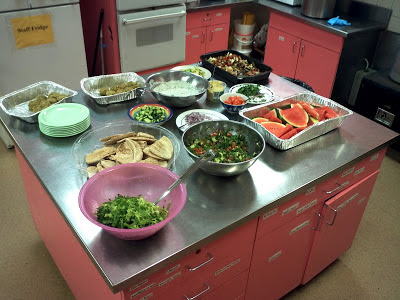After three heavenly months away from the stark reality of poverty, the frustrations of working in the industry known as charity and from the political impotance that tends to overwhelm the agency--and system-- I am sometimes begrudgingly a part of (though I am very much aware of the fact that it is this very system that has allowed me the privilege to "escape" for my leave), I am in better spirits this year to face the do-gooders, their band aid generosity and the lack of agency my "agency" seems to express by thwarting its full political potential out of fear of alienating "donors" during this giving season.
My good humour will not last long as donations pile up, citizens hopped up on Jesus or the desire to treat poverty as a fleeting "learning experience" for their children (at best) or as a feel good corporate wank (at worst), bring armies of folks to the DTES where their christmas kindness is expected and yes, appreciated, but where socks, deodorant, candy, and even money surprisingly don't seem to make a dent in systemic poverty (why else need they come back each year and myself each day?)
My post-vacation bliss will perhaps last a bit longer than I expected as it seems some (I should mention way less established agencies) are cluing in and promoting--gasp!---political change!
The Renfrew-Collingwood Neighbourhood House has the balls to name to problem by promoting the BC poverty reduction coalition's brazen initiative to educate children about the root causes of social injustice and to urge them--through a more mindful canned food drive--to ask the public to demand the government step up and do its job!
We can all agree that the community does come together to try to address poverty with what limited means we have as mere citizens at our disposal, but nothing is going to change fundamentally if the political climate remains the same. Charity is effective in an emergency situation, but the widening divide between rich and poor in this country is systemic: now woven, just like food banks and shelters which are maxed out, into the very fabric of our lives.
 |
| so why are we doing this again?
Not just for kids, check out the "keep your coins and make change" innitiative: http://bcpovertyreduction.ca/wp-content/uploads/2013/12/2013_prc-food-bank_lesson-plan-complete.pdf
|
Now if only other agencies could promote this message...


